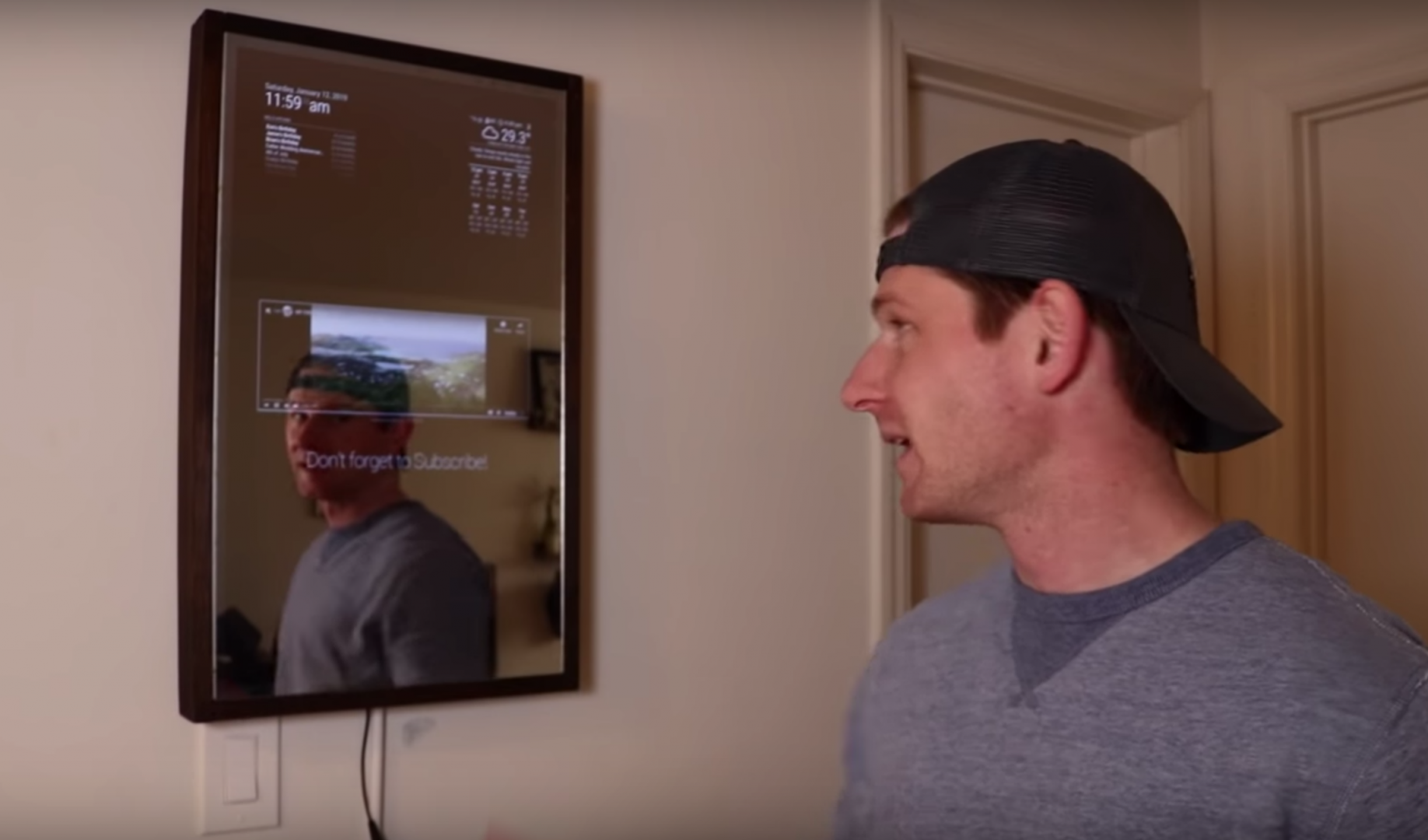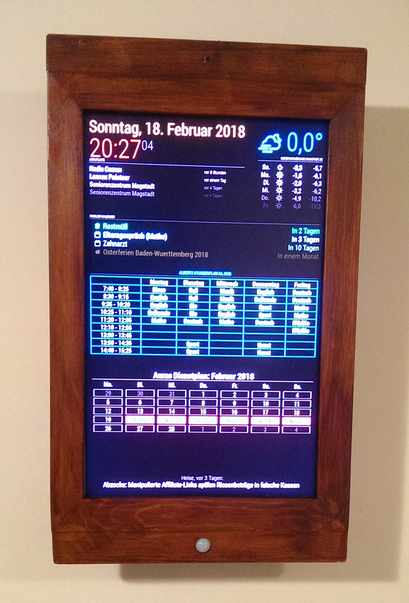
- RASPBERRY PI MAGIC MIRROR HOW TO
- RASPBERRY PI MAGIC MIRROR INSTALL
- RASPBERRY PI MAGIC MIRROR SOFTWARE
- RASPBERRY PI MAGIC MIRROR DOWNLOAD
We’re forever grateful to all the content creators who make videos of their Raspberry Pi projects. Looking for more Raspberry Pi videos from Brian? Check out his Raspberry Pi playlist and be sure, as always, to subscribe to his channel. Find a whole host of such third-party add-ons in this GitHub wiki. As Brian Cotter explains in the video above, he used AgP42’s MMM-iFrame-Ping and eouia’s MMM-GooglePhotos to integrate YouTube videos and photographs into his magic mirror.Īnd of course that’s not all! Other magic mirror add-ons let you implement 3D gesture detection or display international currency values, Google Fit totals, and more. The modular nature of MagicMirror² lets third-party developers easily bring their own ideas to the platform.
RASPBERRY PI MAGIC MIRROR SOFTWARE
The software most people use for setting up their magic mirror is MagicMirror², a free, group-maintained open-source platform created by Michael Teeuw.Īnd you know what open-source means… Third-party add-ons! Once it’s set up, you have yourself both a mirror and a notification board complete with calendar events, memos, and more. Start by opening a terminal window on your Raspberry Pi and navigating to your MagicMirrors modules folder. The basic homemade model consists of a screen (usually an old computer monitor or flatscreen TV), a piece of two-way mirrored acrylic or glass, a frame, and a Raspberry Pi. While big-brand smart mirrors cost upwards of a bajillion dollars, a homemade magic mirror costs pennies in comparison. The popularity of magic mirrors has grown massively over the past few years, thanks to how easy it’s become to find cheap displays and great online tutorials. Mention Raspberry Pi to the uninitiated, and they’ll probably ask if it’s “that green thing people use for game emulation and smart mirrors?”.
RASPBERRY PI MAGIC MIRROR DOWNLOAD
You can download it at /projects/win32diskimager/. When the ZIP-file is extracted you need Win32 Disk Imager. If you are interested in reading more on this, check out the links given below.Bring YouTube videos, Google Photos, and more to your magic mirror, with third-party modules and the MagicMirror² open-source software platform. Step 1: Configurations of the Raspberry Put your SD-card in the computer and write down the letter (in my case D:\). Step 4: Add this to the file, save and exit.Įven if it looks like a complete project, there is enough room for improvements and modifications.įor example, if you want to save power when no one is in front of the mirror, interfacing a motion sensor will help you to control the screenâs power or sleep mode of the mirror. Step 3: After that create a shell script for the startup: Step 2: Command in step 1 will output another command. Open your terminal on your Pi and perform the following: With these five steps, your smart mirror will automatically start when the Pi boots up. After this configuration, we can remove the keyboard and mouse from the mirror. Getting the Magic Mirror to start on system boot is the final configuration.
RASPBERRY PI MAGIC MIRROR HOW TO
The mirror recognizes both animate and inanimate objects and even provides random compliments to boost your self-esteem! How to Make the Mirror Start on System Boot

The module lets you add other stuff like the Google Assistant, YouTube, and calendar tasks. Its features are not limited to just the ones I highlighted in this project. Finally, you should be able to see info like the time, news headlines, messages, and more as shown below.Īs you can see, the Magic Mirror platform is easy to customize and it is expandable.

Once Magic Mirror is fully installed, it will start up on its own. Type Y and hit Enter as we want it to be alive all the time. Type Y and hit Enter, as we want it to start automatically when the Raspberry Pi boots up.
RASPBERRY PI MAGIC MIRROR INSTALL
It will download and install the magic mirror platform by cloning the GitHub repository, along with its dependencies.Īlong the way, it will prompt you with two options.ĭo you want to use pm2 for autostarting of your magic mirror? Make sure that you have the latest version of Raspbian on your Raspberry pi.Īfter that, copy and paste the following command in the command prompt. The whole installation may take 10 â 20 minutes depending upon your hardware. To install the magic mirror, your raspberry pi must be connected to a wifi network. You can find the customization procedure in the second step.

After installation, it can be customized using a text editor. In the first part, Iâll explain how to install the magic mirror platform through the terminal, which can be easily installed using a single command.


 0 kommentar(er)
0 kommentar(er)
